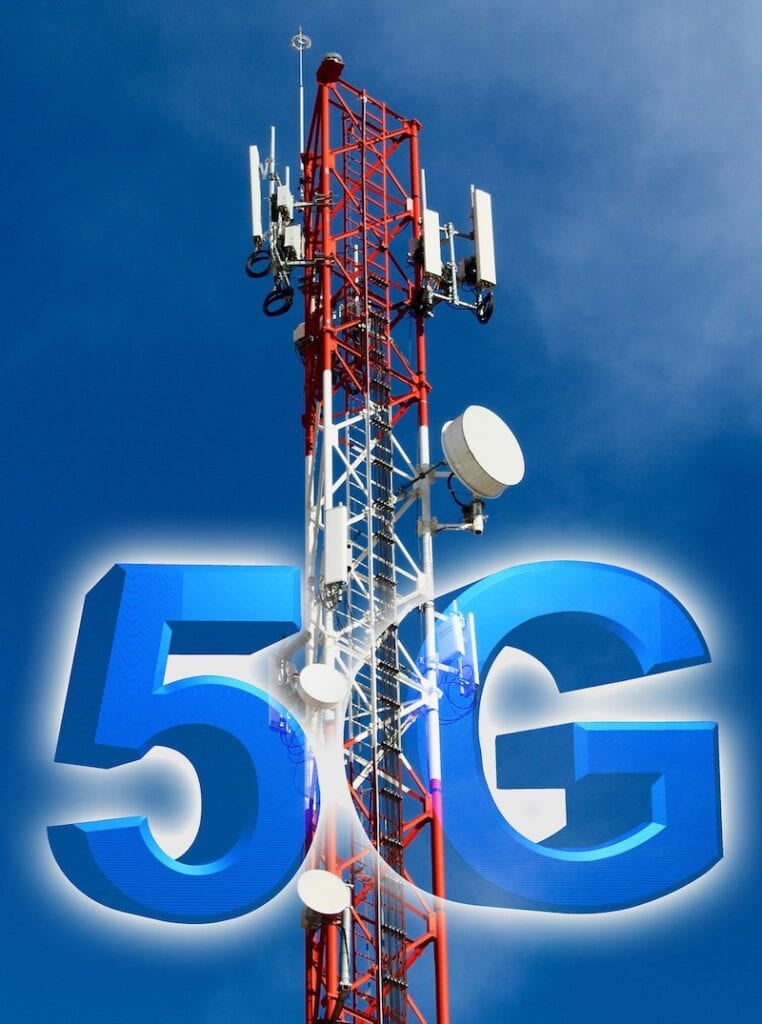Global Avionics Round-Up from Aircraft Value News (AVN)

The global aviation sector is in the midst of a seismic technological shift as aircraft manufacturers, regulators, and service providers move to integrate fifth generation (5G) connectivity into onboard avionics systems.
First, let’s look at what “5G” means. The previous standard of 4G accelerated the smartphone boom by allowing a single device to handle a multitude of functions. But the standard that’s increasingly replacing 4G, the fifth iteration, provides a speed and reach that extends far beyond phones.
5G facilitates the Internet of Things by allowing several interconnected electronic devices and machines to communicate with each other instantaneously at ultra-fast speeds. Depending on specific network conditions, 5G’s speed is exponentially greater than 4G.
What was once the domain of smartphones and smart cities is now rapidly becoming essential to how aircraft communicate, navigate, and even maintain themselves in flight. But this transition isn’t just about better Wi-Fi for passengers. It is poised to influence aircraft valuations, alter lease rates, and reframe the economics of fleets worldwide.
Why 5G Is More Than Just Speed
At its core, 5G is about reduced latency, higher bandwidth, and more reliable connectivity. But for avionics, it’s also about enabling real-time data transmission that enhances safety, performance, and operational efficiency.
With 5G onboard, aircraft can offload telemetry, receive maintenance updates, and communicate with ground infrastructure at unprecedented speeds. This leap forward is particularly crucial for modern jets that rely heavily on digital systems and continuous data feedback.
For example, real-time health monitoring of avionics components becomes far more effective when high-speed, low-latency data transmission is available. Maintenance teams on the ground can receive live updates on system wear, performance metrics, and possible malfunctions. This shift allows operators to embrace predictive maintenance strategies more fully, reducing costly downtime and unplanned repairs.
A Global Standard in the Making
The race is now on to create a single global 5G avionics standard. Historically, differences in spectrum allocation and regulatory regimes have fragmented connectivity infrastructure across regions. Airlines flying from Europe to Asia or from North America to South America often switch between incompatible communication systems mid-flight.
A unified 5G standard would eliminate those inefficiencies, allowing aircraft to maintain seamless connectivity regardless of region. Major players like Airbus, Boeing, and Honeywell are working with international regulatory bodies to develop avionics systems that are “5G ready” in both hardware and software. These efforts also involve retrofitting existing aircraft, which introduces both opportunity and risk into the secondary aircraft market.
Impact on Aircraft Values and Lease Rates
Aircraft equipped with advanced 5G-compatible avionics are already being appraised at a premium. Lessors are beginning to differentiate between aircraft that are 5G-upgraded and those that are not, especially for narrowbodies expected to operate in high-traffic regions with dense data environments. While the exact value uplift varies by model and configuration, early indicators suggest a 3% to 5% bump in base values for aircraft retrofitted with modular 5G avionics.
On the lease side, the story is similar. Newer aircraft with integrated 5G fetch higher monthly lease rates, driven by their enhanced connectivity capabilities. Operators recognize the operational savings and safety improvements 5G enables, and they’re willing to pay a premium to avoid the compliance and upgrade headaches down the road.
For legacy aircraft that are not easily upgradeable, values are beginning to soften, especially in regions like Europe and parts of Asia where regulators are pressing ahead with ground infrastructure designed around 5G capabilities. These aircraft may still find homes in less regulated markets, but the pricing power of such placements is waning.
Challenges and Bottlenecks
Integration is not without its hurdles. Spectrum allocation remains uneven globally, and regulatory harmonization is slow. There are also lingering cybersecurity concerns. The more connected an aircraft becomes, the more it must be protected against intrusion.
This means avionics suppliers must incorporate layers of security, from encrypted transmission protocols to onboard firewalls. These added requirements increase development and installation costs, impacting ROI calculations for operators and lessors alike.
Moreover, while new aircraft can be delivered 5G-ready, retrofitting older fleets is a costly and time-consuming process. Avionics bays are tightly packed, and power budgets are carefully managed. Replacing legacy communication modules with new 5G units often requires significant rewiring and recalibration, which in turn grounds aircraft for extended periods.
Still, these costs are increasingly seen as a necessary investment. Airlines and lessors alike are reluctant to be left holding the bag on outdated technology that will soon limit routing flexibility or fail to meet regulatory standards.
What’s Ahead
The next two years are critical. As more countries roll out 5G-compatible airport infrastructure, pressure will mount on operators to ensure their fleets can interface with the new digital ground environment. The ICAO and other global regulators are expected to release more guidance on 5G integration protocols, which could prompt a wave of upgrades and retrofits across the commercial fleet.
Fleet planners are already baking 5G-readiness into asset selection decisions. Narrowbodies flying short, high-frequency routes are top candidates for early adoption, since these routes stand to benefit most from real-time maintenance and operational data streaming. Widebodies operating long-haul services will follow, especially for operators serving high-traffic hubs where 5G coverage is expected to be densest.
Lessors, meanwhile, are adjusting lease language to account for 5G capabilities. Some lease agreements now stipulate requirements for maintaining 5G readiness throughout the term of the lease, much like traditional clauses for ETOPS certification or cabin configuration.
This article originally appeared in Aircraft Value News.
John Persinos is the editor-in-chief of Aircraft Value News.